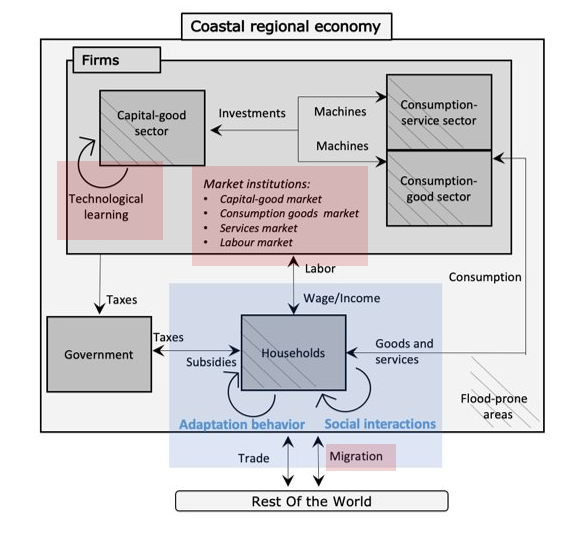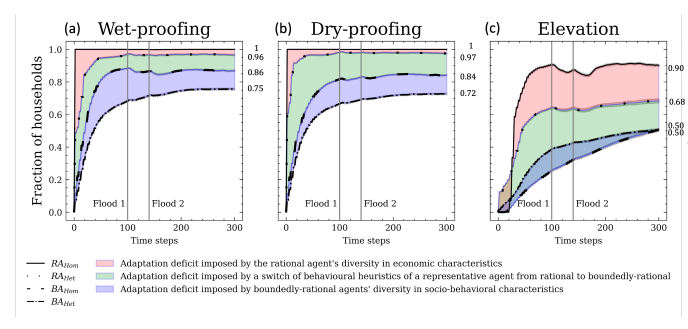by Liz Verbeek
From June 22nd to 24th, I had the opportunity to present some of our work on the Coastal Regional economy Agent-Based (CRAB) model, developed by Alessandro Taberna, at the 26th Annual Workshop on Economic Science with Heterogeneous Interacting Agents (WEHIA). This year’s workshop took place at the University of Primorska in Koper, Slovenia.
With the CRAB model, we study household adaptation behavior in a complex evolving flood-prone coastal economy. The model is populated with heterogeneous households and firms of three different economic sectors (Figure 1). Following the Keynes & Schumpeter (“K+S”) evolutionary economics tradition, the core economic dynamics of the CRAB model are driven by four market institutions (labor, capital, goods and services); firms’ technological advancement by investing in R&D to discover newer and more productive machines; and changes in productivity, GDP, wages, unemployment and savings. Households interact with firms in these market institutions by buying goods and services and being employed at the firms. They may switch jobs depending on their wages, or may create new firms themselves. By incorporating these interactions between households and firms in our model, we can study the effects of unemployment and macroeconomic restructuring on household recovery in the aftermath of a flood.

In our latest work, we contribute towards a better understanding of individual climate change adaptation by embedding empiricallly-rich household behavior in the evolutionary macroeconomy, leveraging on our adaptation behavior survey data from the USA. By comparing the adaptation uptake in the CRAB model under the assumption of behaviorally-rich households to the outcomes under the assumption of a representative rational agent, we observe the emergence of an ‘adaptation deficit’ – the underestimation of adaptation uptake when assuming a representative rational agent (Figure 2). In addition, when exploring the effect of heterogeneity in financial contraints (income, education and damages), we find that this adaptation deficit is primarily explained by the “soft” adaptation constraints (awareness, social influence) of behaviorally-rich agents, and only slightly enlarged by heterogeneity in financial constraints.

Presenting these results at WEHIA resulted in some fruitful discussions, and a very valuable learning experience for me. Overall, I enjoyed the interesting talks and my time in Koper very much. It is a beautiful city, and its location on the Slovenian coast was very welcome during the couple of days in which the maximum temperature reached 35°C more than once.
